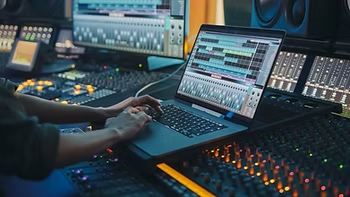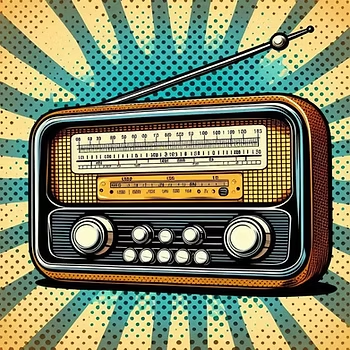
In today’s rapidly evolving music landscape, independent musicians face a variety of decisions when it comes to releasing their music. One of the biggest choices is whether to release a traditional album or focus on curating playlists. Both formats have their own advantages and challenges, and the decision you make can significantly impact how your music is received and how you grow your audience. In this blog post, we’ll break down the pros and cons of albums and playlists, help you figure out which option works best for your goals, and provide some tips on balancing creativity with business strategy.
Albums: The Traditional Route
For decades, albums have been the gold standard for musicians. An album is often seen as a cohesive body of work, offering a full experience where each song contributes to a larger narrative or theme. Many iconic musicians have built their careers on the strength of their albums, using them as a canvas for creative expression. But in today’s streaming era, is the album still the best choice for independent artists?
Pros of Releasing an Album:
1. Artistic Freedom and Cohesion:
Albums give artists a larger canvas to tell a story or explore a concept. For musicians with a strong artistic vision, an album allows them to create a more immersive experience for the listener. Each song can flow into the next, offering a more cohesive and memorable journey.
2. Legacy and Branding:
Albums have a certain prestige attached to them. Releasing a full-length album can establish you as a serious artist with a body of work to share. It can be a powerful branding tool, helping you build a loyal fan base who appreciates your long-form artistry.
3. Monetization and Sales:
Albums are easier to monetize in certain ways. Whether through physical sales (vinyl, CDs, etc.) or digital album purchases, fans may be more willing to buy an album than individual singles. Platforms like Bandcamp also support album sales, giving artists a chance to earn more revenue.
Cons of Releasing an Album:
1. Time and Resource Intensive:
Creating an album requires a significant amount of time, effort, and often financial investment. From songwriting and recording to production and marketing, the process can take months or even years. This makes it harder for independent artists to keep up with the fast-paced nature of today’s music industry.
2. Risk of Losing Momentum:
In an era where listeners are constantly consuming new content, taking too long to release an album can mean losing momentum. Fans expect regular updates and content, and focusing solely on a single album release can make it difficult to maintain consistent engagement.
3. High Expectations:
Listeners often expect a lot from an album. If your album doesn’t meet their expectations, it can be harder to recover compared to releasing a single or playlist. Albums are scrutinized more closely, and there’s more pressure to deliver a cohesive and well-produced product.
Playlists: The Modern Approach
Playlists have become a dominant force in today’s music industry, especially with the rise of streaming platforms like Spotify, Apple Music, and YouTube. Playlists offer independent musicians a new way to promote their music without the pressure of creating a full album. So, what makes playlists such a valuable tool for independent artists?
Pros of Focusing on Playlists:
1. Regular Content and Flexibility:
Playlists allow you to release music more frequently. Instead of waiting to finish an entire album, you can release singles and add them to curated playlists. This keeps your fans engaged and helps you stay relevant in an industry that thrives on regular content updates.
2. Discoverability and Audience Growth:
Playlists are one of the most effective ways to reach new listeners. Getting featured on popular playlists, either through editorial curation or user-generated content, can expose your music to a wider audience. Many independent artists have gained traction by being included in playlists that feature a mix of well-known and emerging artists.
3. Adaptability and Personalization:
Playlists can be tailored to specific moods, activities, or themes, giving you the freedom to experiment with different styles of music without being confined to a single genre or narrative. You can also create your own playlists that include both your music and tracks from other artists, giving your fans insight into your musical tastes and influences.
Cons of Focusing on Playlists:
1. Lack of Cohesion:
While playlists offer flexibility, they often lack the cohesiveness that an album can provide. If your goal is to create a deep, artistic experience, releasing standalone singles in playlists may not convey the same message or narrative as a full-length album.
2. Monetization Challenges:
While playlists can drive streams, they don’t necessarily lead to higher revenue. Streaming payouts are notoriously low, and without physical or digital album sales to fall back on, it can be challenging to earn significant income from playlist placements alone.
3. Over-saturation:
The playlist world is crowded. Thousands of new songs are uploaded to streaming platforms daily, making it difficult for independent artists to stand out. Getting your music on popular playlists requires strategy, promotion, and often a bit of luck.
Which Format Is Best for You?
So, should you release an album or focus on playlists? The answer depends on your goals as an artist and where you are in your career.
Consider Releasing an Album If:
- You have a strong artistic vision and want to tell a story or explore a concept across multiple tracks.
- You’re ready to invest time and resources into creating a cohesive body of work.
- You have an established fan base who is eager to support a larger release.
Consider Focusing on Playlists If:
- You’re still building your audience and want to maximize your chances of getting discovered by new listeners.
- You prefer to release music more frequently and experiment with different styles.
- You want to engage your fans with a steady stream of content, rather than waiting for a big release.
Balancing Creativity with Business Strategy
One of the biggest challenges for independent artists is balancing creativity with business strategy. While your artistic instincts may push you toward creating an album, it’s essential to consider the practical aspects of releasing music in today’s industry. Here are a few tips to help you strike that balance:
- Start with Singles: If you’re unsure whether to commit to an album, start by releasing singles and building up your catalog. This will give you the flexibility to experiment and gauge listener interest without the pressure of creating a full-length album.
- Create Thematic Playlists: Even if you don’t release an album, you can still curate playlists with a thematic or narrative focus. This allows you to showcase your creativity while taking advantage of the discoverability that playlists offer.
- Mix and Match: There’s no rule saying you have to choose between an album and playlists. Many artists release a series of singles and playlists, then compile them into an album once they’ve built momentum. This strategy allows you to keep your audience engaged while working toward a larger project.
Conclusion
In the end, both albums and playlists have their place in an independent artist’s career. The key is to understand your goals and audience, and to strike a balance between creativity and practicality. Whether you choose to focus on releasing an album or curating playlists, both formats offer unique opportunities to connect with your listeners and grow your fan base.








